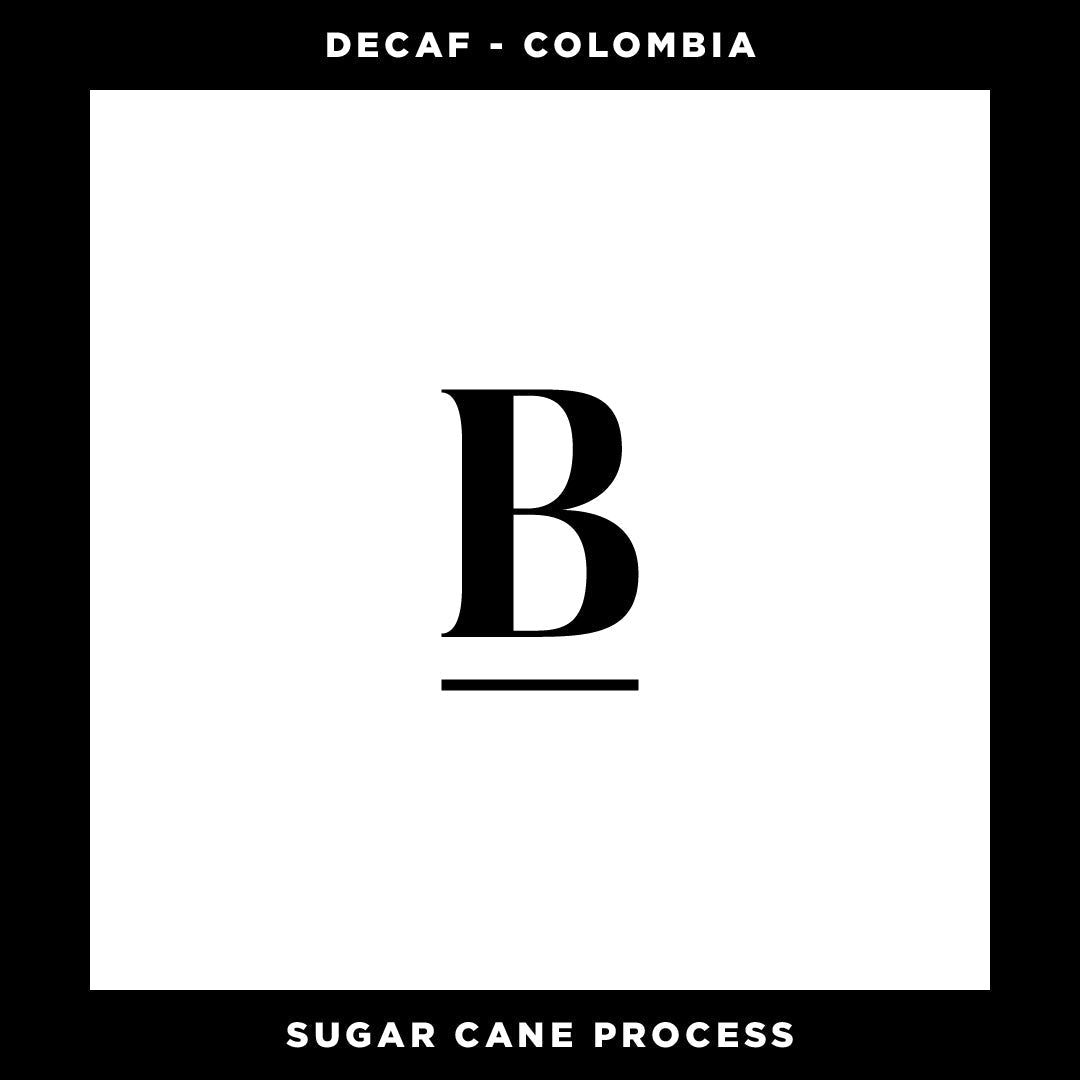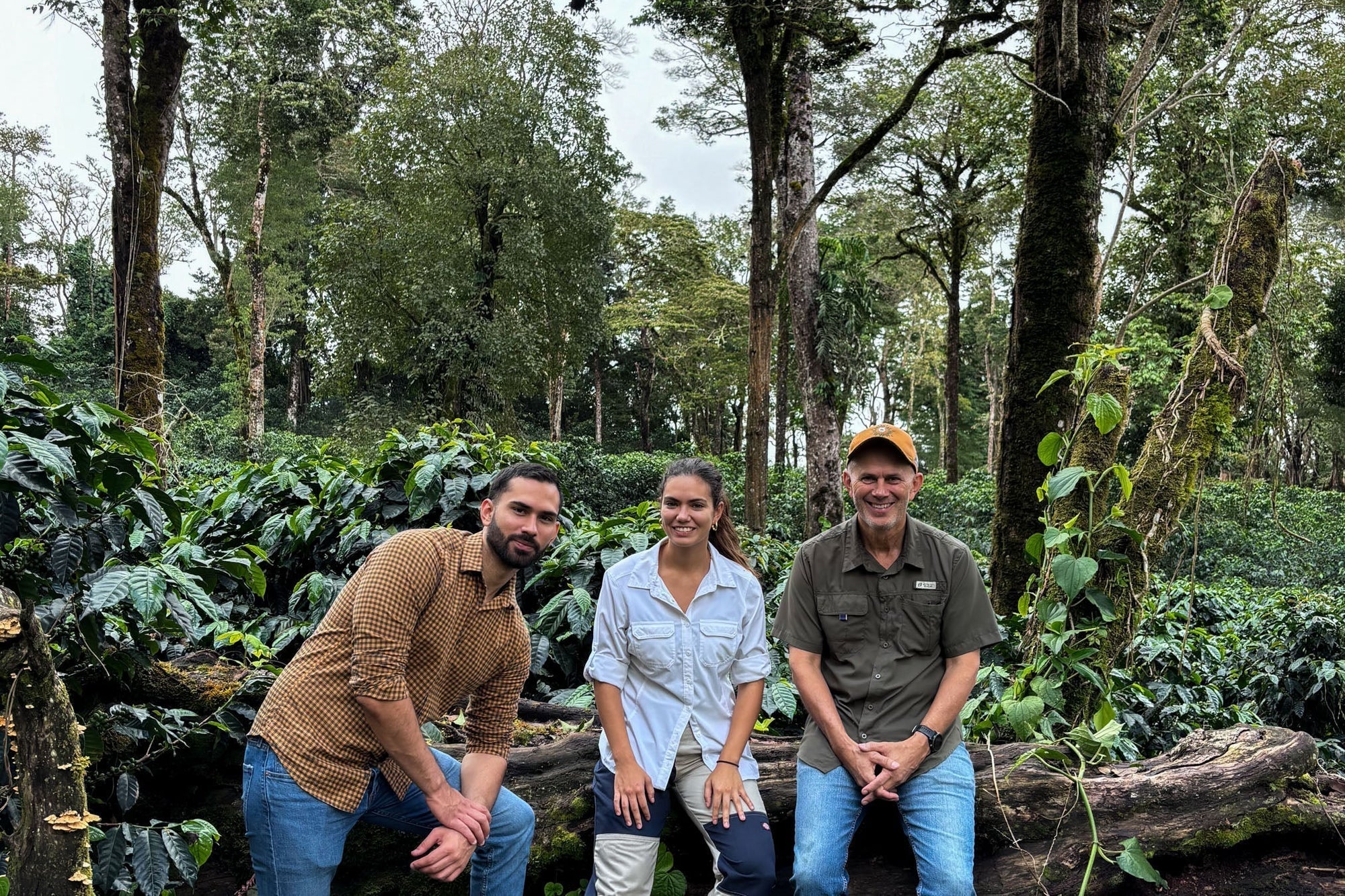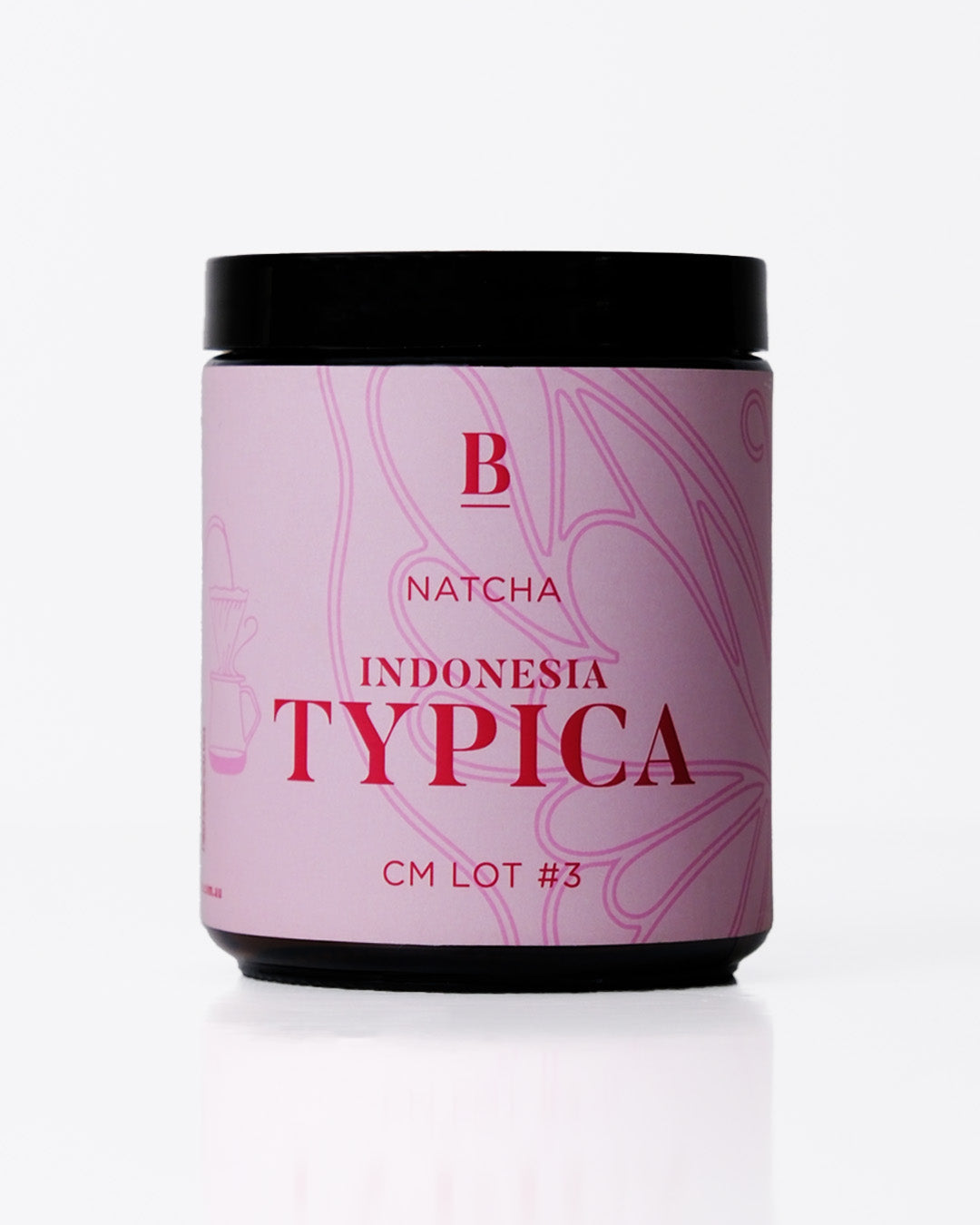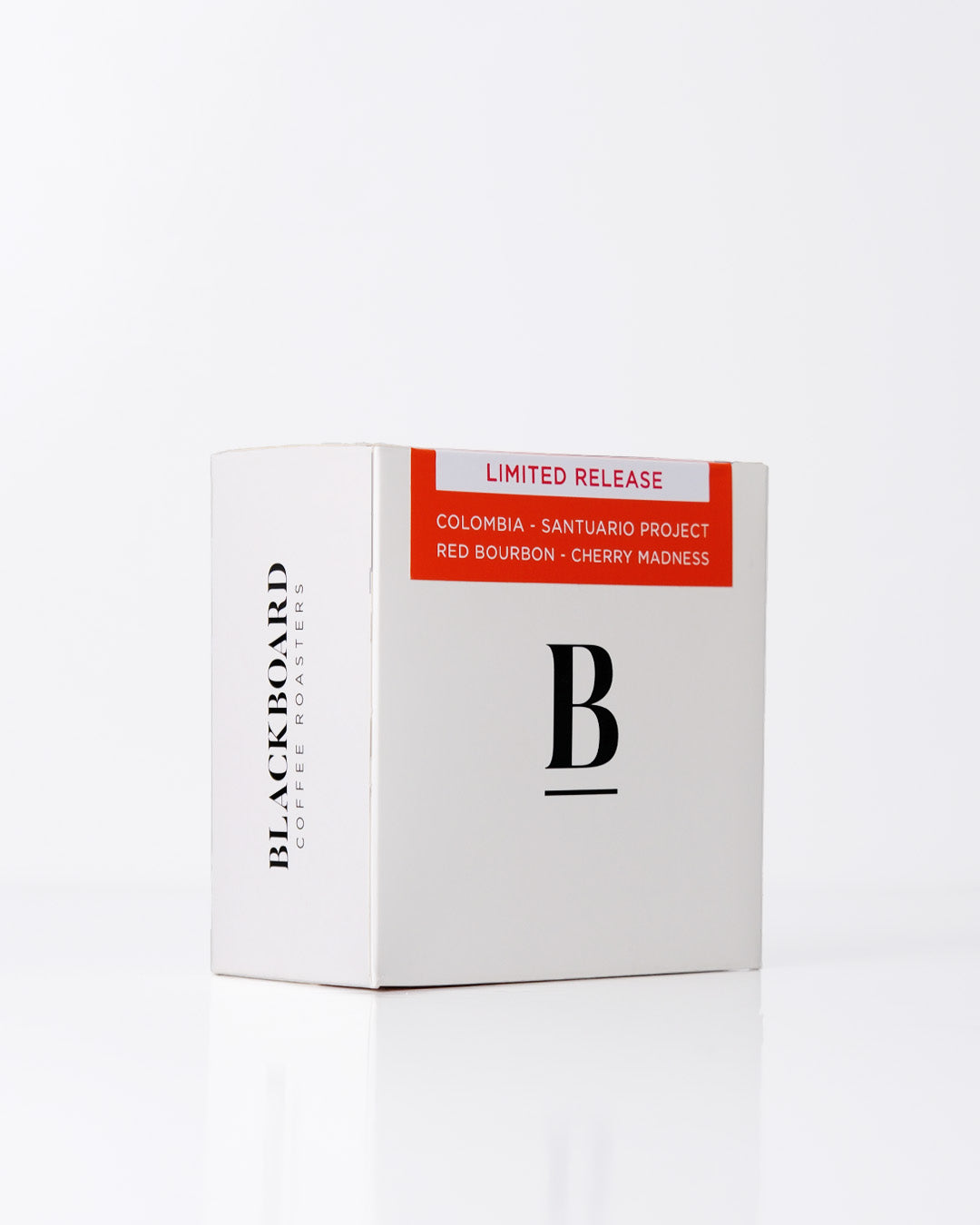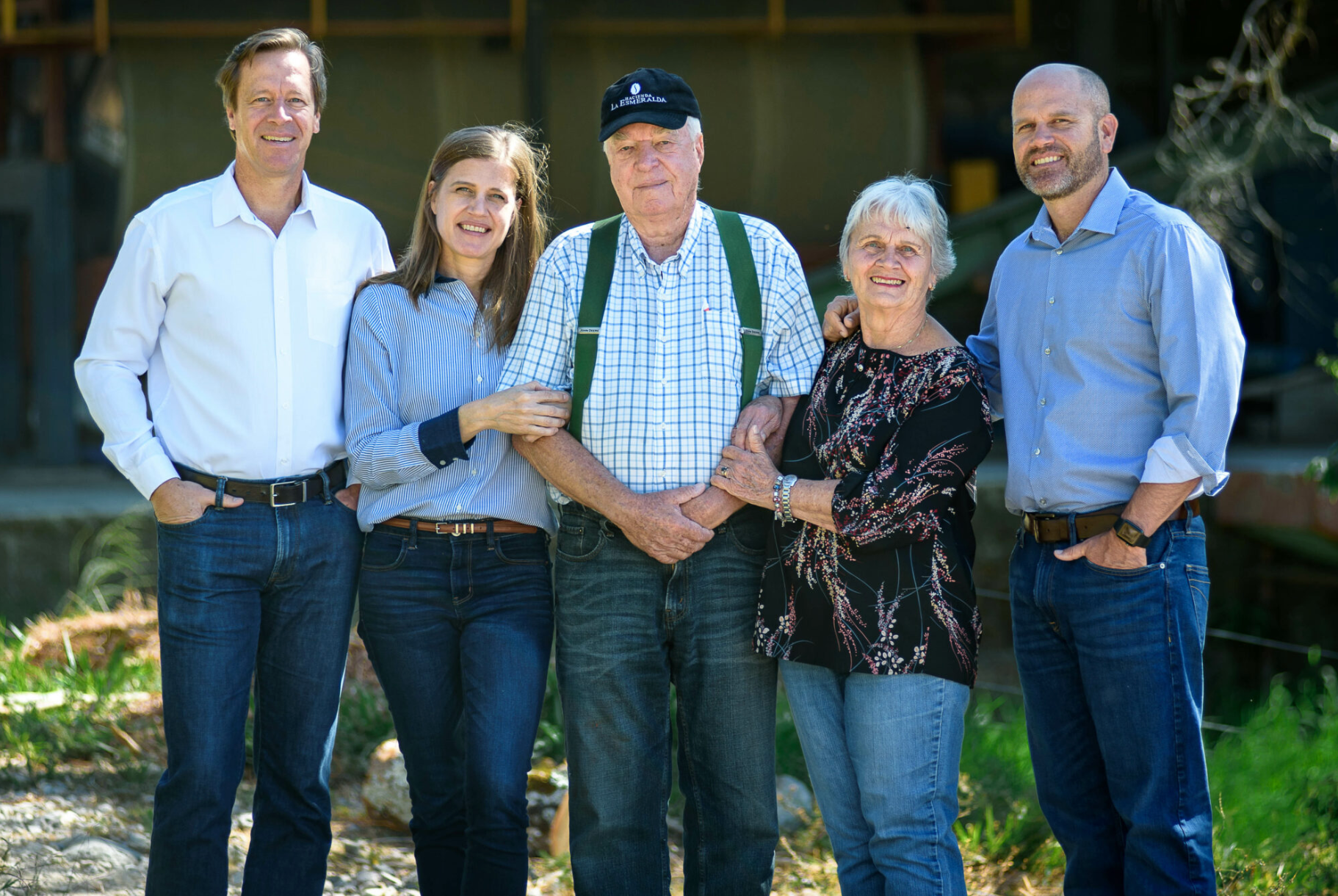
Introduction
Let's talk about our Decaf! It's a single origin Colombian Castillo, perfect for late-night cravings or caffeine-sensitive sippers, this coffee proves decaf doesn’t mean sacrificing flavour. Sourced from the lush highlands of Colombia’s Coffee Triangle and decaffeinated using a natural sugarcane process, this brew delivers a rich, velvety cup with all the depth and sweetness you’d expect from a classic Colombian coffee.
| Producer / Farm |
Cooperativa de Caficultores de Anserma (Co-op Anserma) |
|---|---|
| Process | Sugarcane Decaf |
| Variety | Castillo |
| Elevation |
1,400 – 1,800 MASL |
| Region |
Anserma, Caldas |
| Country | Colombia |
Decaf Coffee: Your Questions Answered
“Is there any caffeine in decaf?”
Yes - but barely. Decaf isn’t caffeine-free, but it’s close. By law, EU standards require decaf to have <0.1% caffeine. To put that in perspective:
-
1 cup of regular coffee: 95mg caffeine
-
1 cup of decaf: 2-5mg caffeine (less than a bite of dark chocolate!)
This makes decaf ideal for late-night cravings, pregnant coffee lovers, or anyone sensitive to caffeine’s effects.
“Is decaf coffee healthy?”
Decaf gets a bad rap, but science says otherwise:
-
Antioxidant powerhouse: Decaf retains polyphenols (linked to reduced inflammation and heart disease risk).
-
Gentler on the gut: Less acidity than regular coffee, easier on sensitive stomachs.
-
No jitters, all joy: Perfect for those avoiding caffeine’s anxiety or sleep disruption.
Myth busted: Old tales linking decaf to “toxins” stem from outdated chemical processes (like methylene chloride). Modern methods like our sugarcane decaf use natural, food-safe ingredients.
“How is decaf made?”
Not all decaf is created equal. The method impacts flavour, ethics, and even health. Here’s the breakdown:
-
Swiss Water® Process
-
How: Beans soak in water and caffeine is leeched out of the beans via osmosis.
-
Pros: Chemical-free
-
Cons: There is a loss of flavour, specifically it can mute delicate fruity/floral notes and leave the coffee tasting flat.
-
-
CO2 Process
-
How: Pressurised carbon dioxide extracts caffeine.
-
Pros: Preserves brightness and acidity; great for light roasts.
-
Cons: Energy-intensive and costly.
-
-
Sugarcane (Ethyl Acetate) Process (Our method of choice)
-
How: Similar to the water method, green beans are soaked in panela sugar enriched water, caffeine bonds with ethyl acetate - a compound derived from fermented sugarcane.
-
Pros: Naturally sweetens beans, enhances body, creates a pleasing flavour.
-
Cons: Rare and pricier (but worth it).
-
-
Chemical Solvents (Methylene Chloride)
-
How: Soak beans in industrial solvents to strip caffeine.
-
Pros: Cheap.
-
Cons: Leaves a chemical aftertaste; banned in organic certifications.
-
Why our method wins: Sugarcane decaf is like a spa day for beans. It’s gentle, natural, and actually improves sweetness, no harsh chemicals or flavour stripping.
“What makes decaf coffee good?”
Bad decaf tastes like cardboard. Great decaf? Think specialty-grade care:
Start with stellar beans
-
Cheap decaf often uses low-grade, defect-ridden beans (since “it’s just decaf”). We use 100% specialty-grade Castillo - the same beans we’d roast for a regular single-origin.
Natural processing
-
Chemical methods strip flavour; ours enhances it. The sugarcane process adds a caramelised sweetness that complements Colombian coffee’s natural chocolate notes.
Transparency
-
Many decafs hide their origins and methods. We track every batch from Co-op Anserma’s farms to your cup.
Red flags for poor decaf:
-
“Decaffeinated coffee” (no process listed) → Likely chemical solvents.
-
Bitter, ashy aftertaste → Over-roasted to mask low-quality beans.
-
Vague origins → No accountability for farming practices.
How’s It Taste?
It's a decadent espresso experience. Think dark chocolate melting into ripe plum, with a juicy hint of red grape that brightens the cup. The sugarcane decaf process preserves the coffee’s natural sweetness, resulting in a smooth, full-bodied espresso. Whether you’re pulling shots or sipping straight, this coffee is proof that decaf can dazzle.

How To Brew?

To experience the full depth of this coffee, we recommend trying these brewing methods:
Each brewing method will highlight different flavours, aromas and textures from the coffee but all of them will result in a satisfying cup.
For more brewing tips, visit our Brewing Guide.
Who’s Behind This Amazing Coffee?
This coffee is a labour of love by Co-op Anserma, a collective of over 2,000 smallholder farmers in Colombia’s Coffee Triangle. Founded in 1967, these farmers tend coffee on small plots (around 2.5 hectares), often alongside crops like plantains or livestock. Their dedication to quality and community shines in every bean, creating a decaf that’s as thoughtful as it is delicious.
We’re also proud to highlight the Starts With Soil program, which helps Co-op Anserma farmers adopt regenerative practices. By planting diverse crops and improving soil health, farmers boost incomes and biodiversity. Results so far? 20% higher net income, richer soils, and farms that double as food forests. Every sip supports a greener future for Colombian coffee communities.

The Process
This coffee’s decaffeination uses a natural, sugarcane-based method that’s both safe and flavour-forward. Here’s how it works: Green beans are first steamed to soften their outer layer, then soaked in a gentle solution of water and panela sugar. Over eight hours, this solution naturally dissolves caffeine while leaving the coffee’s inherent sugars and oils intact. Panela, due to it's complex flavour profile helps reduce the loss of flavour compounds but also adds some extra natural flavours to the beans. After rinsing, the beans are slowly dried to their original moisture level, ensuring they retain their rich, chocolatey character. Unlike water-based decaf methods (which can strip flavour), this sugarcane process prioritises taste, delivering a cup that’s sweet, complex, and true to its Colombian roots. Every batch is tracked meticulously from start to finish, so you get decaf that’s as transparent as it is delicious.

Why Our Sugarcane Process Wins
-
Panela Flavour: The ethyl acetate we use is derived from panela (unrefined Colombian cane sugar) working as a solvent as well as a flavour booster as it subtly ferments adding subtle molasses and caramel undertones.
-
Slow & Steady: Beans soak for 8+ hours in the solution, allowing caffeine to dissolve without agitation (which can damage cell structure and mute flavour).
-
Zero Residue: After rinsing, beans are triple-tested for solvent traces. Spoiler: There are none.
-
Farm-to-Transparency: Every batch is tagged with the co-op farmer’s ID, so you know exactly whose hands nurtured your beans.
The Region
Anserma, nestled in Colombia’s Caldas department, is steeped in coffee history. Founded in 1539, this high-altitude region is part of the famed Eje Cafetero (Coffee Triangle), where nutrient-rich volcanic soils and Andean mountain climates produce some of the world’s most balanced coffees. Once a gold-mining hub, Caldas now thrives on coffee - a testament to the resilience and passion of its people.

Our goal is to redefine your expectations of decaf, we hope you enjoy every sip of this remarkable brew!
For those interested in establishing a wholesale coffee partnership, head to our wholesale page and fill out the contact form. If you're a venue looking to purchase casually or feature us as a guest roaster, visit Ordermentum to connect and view our price list.
